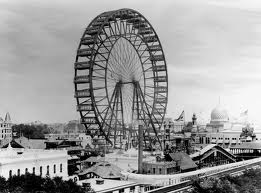Your Wish List
1
LED Dance Floor Rental2
Professional 850 WATT Fog Machine3
LED Park Bench Rental - Battery Operated4
Giant Slip N Slide Rental5
Fiberglass Fun Slide Rental6
19' x 19' Circus World Playland7
Mechanical Bull Rental with Western Ring8
Snowman Maze - 40' x 40'9
51' Skyscraper Water Slide10
21 x 18 Christmas Roundabout Playland11
Fiesta Playland - 19' x 19'
Call us today 480-874-3470
Ferris Wheel Rental Phoenix Arizona
Rent Ferris Wheels in Arizona, Carnival Ride Rental Phoenix Arizona
George Washington Gale Ferris, Jr. was an American engineer. He is mostly known for creating the original Ferris Wheel for the 1893 Chicago World's Columbian Exposition.Ferris left Nevada in 1875 to attend the California Military Academy in Oakland, where he graduated in 1876. He graduated from Rensselaer Polytechnic Institute in Troy, New York, in the class of 1881 with a degree in Civil Engineering. At RPI he was a charter member of the local chapter of Chi Phi Fraternity and a member of the Rensselaer Society of Engineers. He was made a member of the Rensselaer Polytechnic Institute Alumni Hall of Fame in 1998.
Ferris began his career in the railroad industry and was interested in bridge building. He founded a company, G.W.G. Ferris & Co. in Pittsburgh, Pennsylvania, to test and inspect metals for railroads and bridge builders.
The original 1893 Chicago Ferris Wheel is pictured below

Ferris Wheel and Ferris wheel
News of the World's Columbian Exposition to be held in 1893, in Chicago, Illinois, drew Ferris to the city. In 1891, the directors of the World's Columbian Exposition issued a challenge to American engineers to conceive of a monument for the fair that would surpass the Eiffel Tower, the great structure of the Paris International Exposition of 1889. The planners wanted something "original, daring and unique." Ferris responded with a proposed wheel from which visitors would be able to view the entire exhibition, a wheel that would "Out-Eiffel Eiffel." The planners feared his design for a rotating wheel towering over the grounds could not possibly be safe.
Ferris persisted. He returned in a few weeks with several respectable endorsements from established engineers, and the committee agreed to allow construction to begin. Most convincingly, he had recruited several local investors to cover the $400,000 cost of construction. The planning commission of the Exposition hoped that admissions from the Ferris Wheel would pull the fair out of debt and eventually make it profitable.
The Ferris Wheel had 36 cars, each fitted with 40 revolving chairs and able to accommodate up to 60 people, giving a total capacity of 2,160. When the fair opened, it carried some 38,000 passengers daily, taking 20 minutes to complete two revolutions, the first involving six stops to allow passengers to exit and enter and the second a nine-minute non-stop rotation, for which the ticket holder paid 50 cents. It carried 2.5 million passengers before it was finally demolished in 1906.
After the fair closed, Ferris claimed that the exhibition management had robbed him and his investors of their rightful portion of the nearly $750,000 profit that his wheel brought in. He spent the next two years in litigation.